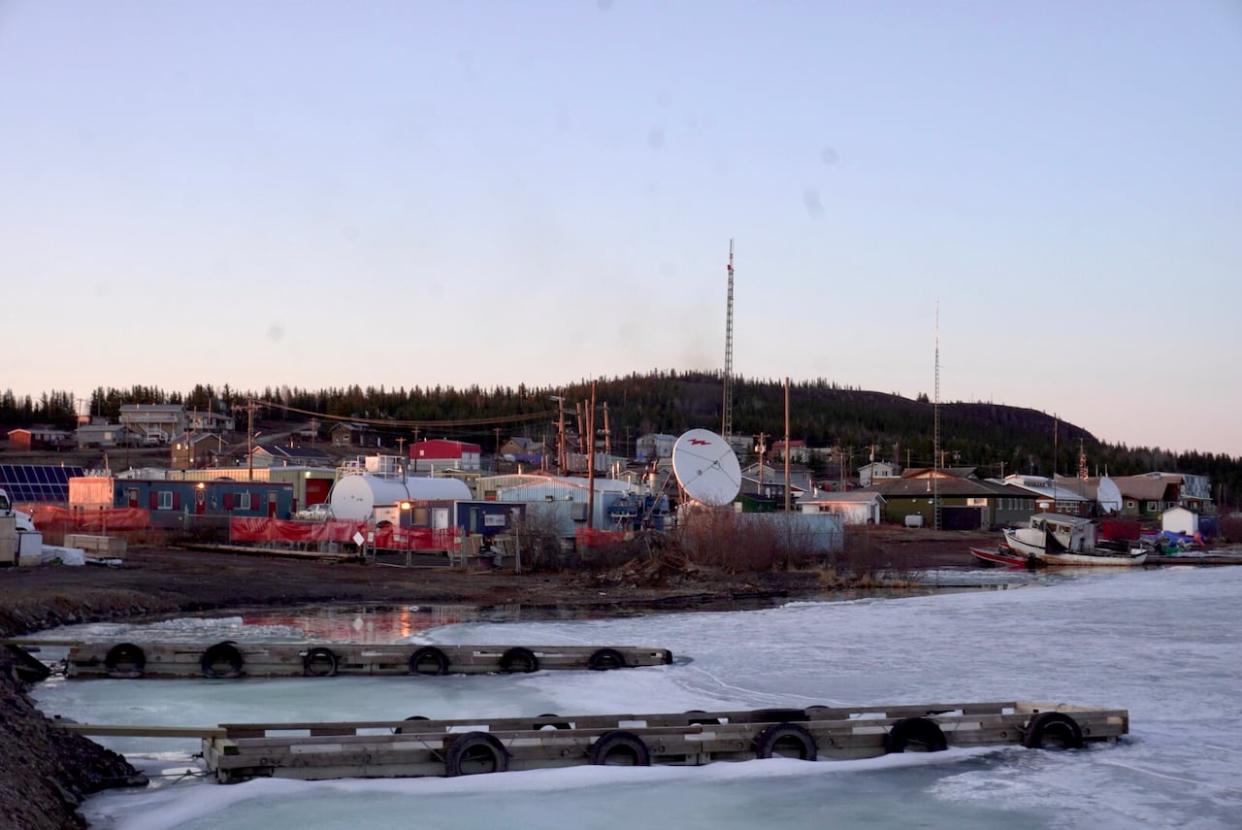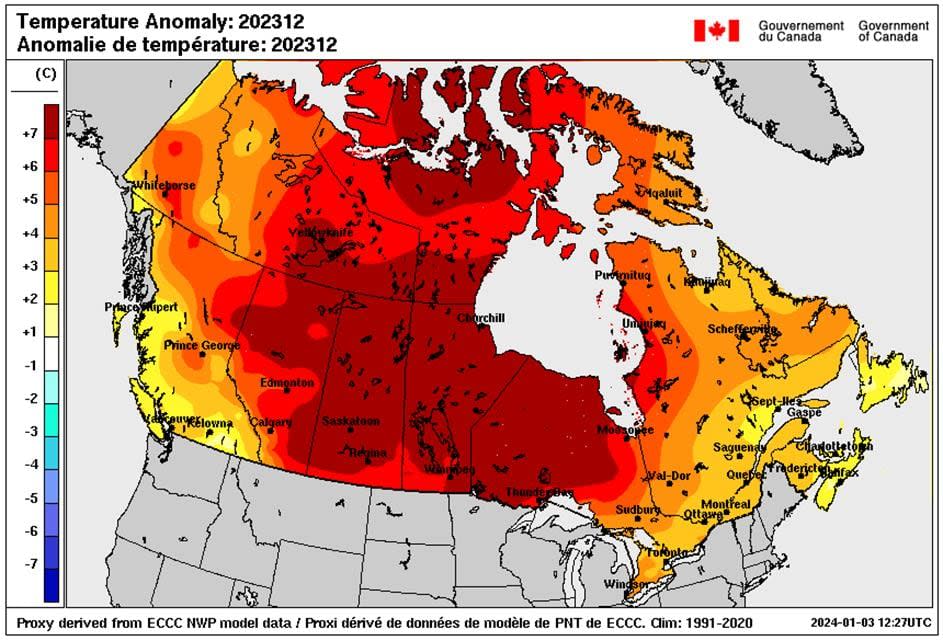El Niño effects around Great Slave Lake made for 'spring-like' December in Łútsël K'é, N.W.T.

People in some N.W.T. communities are pleased to see some colder weather this week, after what's been an unusually mild winter so far.
Extreme cold warnings were issued for several communities last week, and the frigid temperatures have continued since then.
In Łutsël Kʼé, N.W.T., where the community has been facing the difficulties that come when Great Slave Lake doesn't freeze over before Christmas, the temperature drop was welcomed.
The Łutsël Kʼé Dene First Nation community of roughly 330 people is located on the south side of the eastern arm of Great Slave Lake and isn't accessible by land roads. The lake typically freezes over in winter, allowing residents to travel across the ice by snowmobile to hunt and to visit with other communities.
"It's been really weird weather, it's been raining a few times, overcast. It's [been] spring-like weather for weeks," said James Marlowe, chief of Łútsël K'é, before the cold weather finally hit last week.
Marlowe, who spoke to CBC's Hilary Bird on The Trailbreaker, said the community's holiday plans changed due to high temperatures.
"[In mid-December] the ice in some areas of the lake, in the east arm here around Caribou Island, Blanchett Island, Peterson Point, there were still signs of open water."
Across the territory, 41 daytime high temperature records were broken in different communities last month, while only four were broken in December 2022, according to Environment and Climate Change Canada.
In Łútsël K'é, the community's fishing derby during the Christmas festival was cancelled out of safety concerns, and leaders published a warning advising against travel across the lake. Aerial photos showed open waters on Great Slave Lake, Marlowe said.
"Nobody has ventured out into the open ice towards the open area of the lake," he said.
"[Locals] are just hanging around … and going for firewood and some small game hunting [on] inland lakes, channels and bays, where … the ice is safe."

The dark red shading surrounding Great Slave Lake, N.W.T., indicates a daily mean temperature for December that was 7 C above average. Climate scientists say this is due to climate change and the El Niño weather pattern affecting the North. (Submitted by Environment and Climate Change Canada)
This has meant that people from other communities such as Yellowknife and Fort Resolution, N.W.T., couldn't visit, or vice versa. Since travel by snowmobile is significantly cheaper than flying into the community, Marlowe said it was a quieter Christmas than usual.
"We didn't get no visitors, but we just did celebrations ourselves here in the community and it went well."
Jesse Wagar, a warning preparedness meteorologist for Environment and Climate Change Canada, says the North has been seeing the warming effects of climate change and the El Niño weather pattern.
El Niño is a tropical weather pattern that happens every two to seven years and brings warmer and drier conditions to the North.
"We have been under a pretty strong El Niño and that influences the Northwest Territories … but regardless, the North is warming anyway because of climate change," she said.
Specific temperature data for Łútsël K'é isn't kept for records by Environment Canada, explains Wagar. However, the temperature of the region has been warmer than usual, she said — at five to seven degrees above average for the area around Great Slave Lake.
According to the United Nations, 2023 was the hottest year on record, and recent data shows several northern communities broke average annual temperature records. Specifically, this includes Yellowknife, Inuvik, and Fort Simpson in N.W.T., and Watson Lake, Faro and Old Crow in the Yukon.
The warm weather has also stretched into Nunavut, with Arviat, Baker Lake, Cambridge Bay and Gjoa Haven seeing their second-warmest years ever in 2023.
Looking ahead, Wagar says it is likely that the North will continue to see above normal temperatures in the near term.

